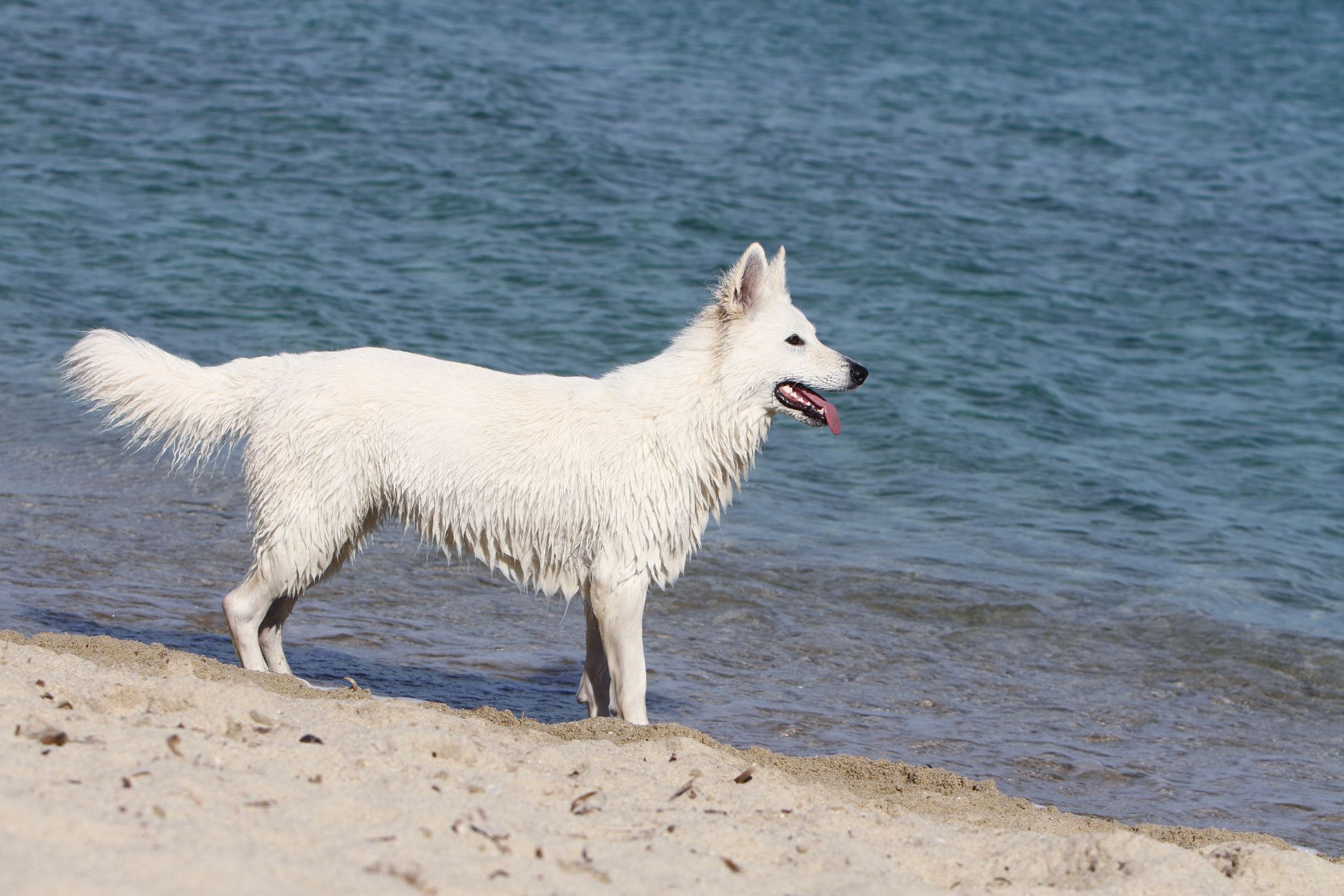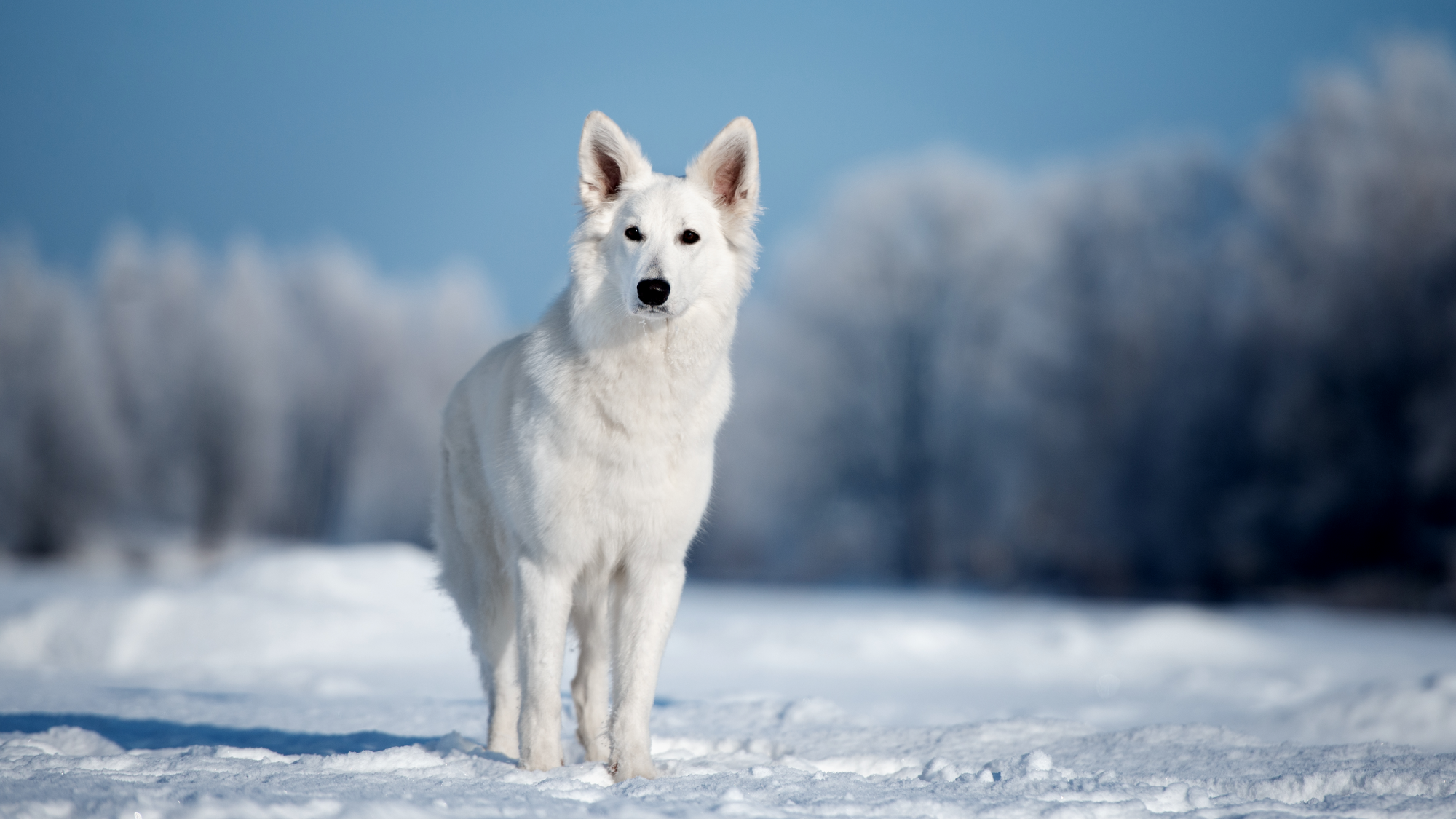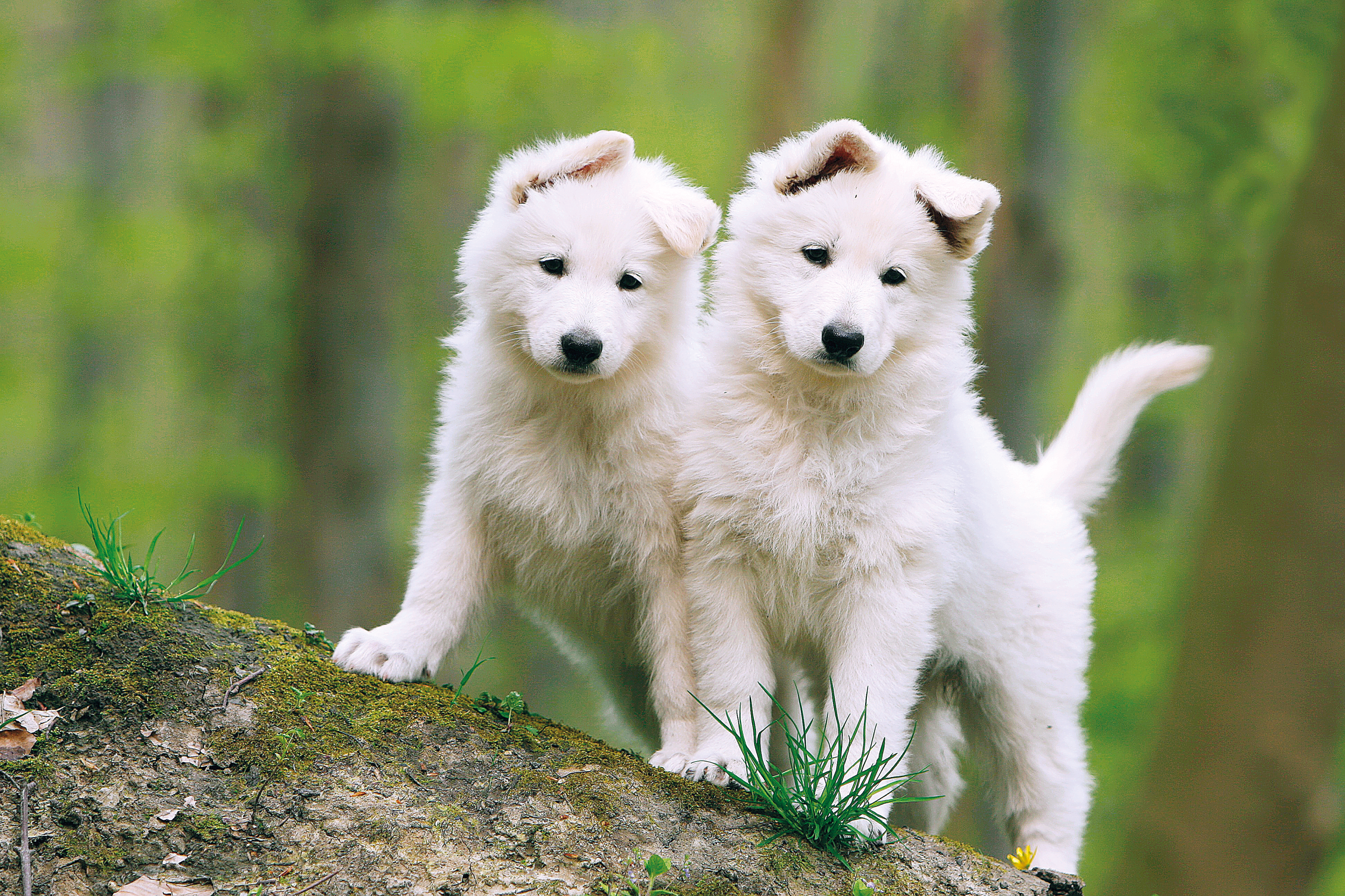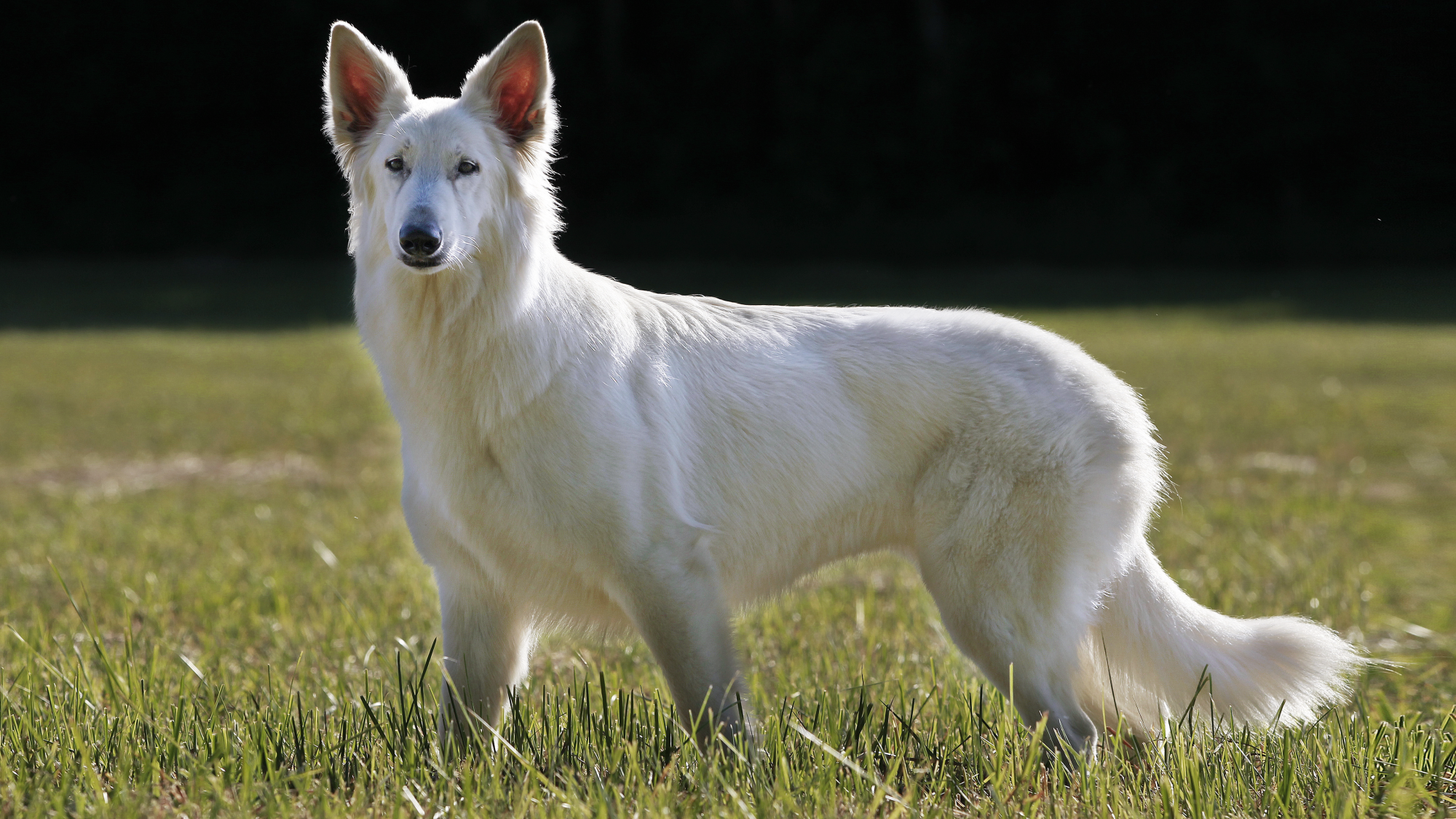
Let's talk White Swiss Shepherd Dogs
Picture a German Shepherd with a mass of white fur and there you have a White Swiss Shepherd Dog. The two canines are brave, loyal and intelligent, although the White Swiss Shepherd Dog is more easygoing. This makes them a great choice for family life; but their intelligence and protective nature can also be trusted with more professional roles, such as working alongside the police and emergency services in search and rescue missions, jobs they have historically done with great success. Today’s White Swiss Shepherd Dog is content to be in the thick of all family action, and is skilled at keeping a watchful eye over the household.Official name: White Swiss Shepherd Dog
Other names: Berger Blanc Suisse
Origins: Switzerland

| Drooling tendencies |  |
Warm weather? |  |
| Shedding level |  |
Suited to apartment living? |  |
| *Energy Level | Moderate | *Friendly pet? |
 |
| Compatibility with other pets |  |
*Can stay alone? |  |
* We advise against leaving pets alone for long stretches. Companionship can prevent emotional distress and destructive behaviour. Speak to your veterinarian for recommendations.
Every pet is different, even within a breed; this snapshot of this breed specifics should be taken as an indication.
For a happy healthy and well-behaved pet, we recommend educating and socializing your pet as well as covering their basic welfare needs (and their social and behavioral needs).
Pets should never be left unsupervised with a child.
Contact your breeder or veterinarian for further advice.


| Baby age | Birth to 2 months |
| Puppy age | 2-15 months |
| Adult age | 15 months to 5 years |
| Mature age | 5-8 years |
| Senior age | From 8 years |

1/7
Get to know the White Swiss Shepherd Dog
All you need to know about the breed
The White Swiss Shepherd Dog may have a mellow temperament but they are incredibly faithful to their family. A gentle giant of the canine world, the breed is known for being patient with children, and once trained they will make for a great playmate.
This is not a dog suited to apartment life, in part due to their size and exercise needs. The White Swiss Shepherd Dog should ideally have access to a secure outdoor space, in which they can run around and play with their humans, in addition to a few runs or energetic walks per day.
With their sociable temperament, the White Swiss Shepherd Dog tends to get on well with other canines. With smaller household pets, it depends how early they are introduced, but they may end up being frequently chased by your White Swiss Shepherd Dog.
The White Swiss Shepherd Dog is fairly adaptable and can be well suited to first-time owners. But they require a lot of attention and prefer to have their human(s) present as much as possible. They also shed significantly and require a daily brush, which may be high maintenance for certain owners. If you sign up for all that fluff, you can be sure that your White Swiss Shepherd Dog will keep a protective watch over the household.

2/7
2 facts about White Swiss Shepherd Dogs
1. Un-fur-gettable
That generous white coat will draw many an admiring glance - and it helps keep the White Swiss Shepherd Dog warm during harsh Swiss winters. But beauty often comes at a price! The breed are heavy shedders all year round, so a sturdy vacuum will be required.
2. Loves a challenge
The White Swiss Shepherd Dog is a task-oriented breed of high intelligence, so keeping them mentally challenged is as important as giving them enough physical exercise. They will respond well to agility based training and enjoy learning new commands.
History of the breed
The Swiss White Shepherd Dog can be traced back to late 19th century Germany, when they were simply known as White Shepherd Dogs. Their canine ancestors were selected by Max Von Stephanitz, a German cavalry officer and eventually, first president of the German Shepherd association, to create a large dog, capable of herding and guarding, while also being compliant. Thus, the German Shepherd was born. Eventually, the white coat of a German Shepherd was no longer accepted as a breed standard, which almost threatened the Swiss White Shepherd Dog into extinction.
Thankfully that didn’t happen and the breed’s popularity increased in the 1960s, most notably in the U.S. and Canada where they were recognised as a separate breed to the German Shepherd. In the 1970s, some of these dogs were sent over to Switzerland, where breeding programmes were hugely successful. In 1991, the “Swiss” was added to the breed’s official title. In 2017, the breed was recognised by the Kennel Club in the United Kingdom.

4/7
From head to tail
Physical characteristics of White Swiss Shepherd Dogs
1. Ears
V-shaped ears set very wide apart, corresponds to colour of muzzle.
2. Head
Very large head with powerful jaw, defined by folds of skin on side.
3. Body
Giant well-proportioned body characterised by large limbs, paws, thick neck.
4. Tail
Tail tapers to the end, slightly curved.
5. Coat
Coarse and short outer coat, dense short undercoat.

5/7
Things to look out for
From specific breed traits to a general health overview, here are some interesting facts about your White Swiss Shepherd Dog

6/7
Caring for your White Swiss Shepherd Dog
Grooming, training and exercise tips
The dense double coat of the White Swiss Shepherd Dog can either be of medium length or long. It will require daily brushing, as the breed sheds year-round, so owners must be ready for all that fluff. Bathing however, is only required one to two times a year. With all that time spent outdoors, it is wise to check your White Swiss Shepherd Dog’s ears and eyes regularly, to avoid infection. Brush their teeth often, daily if possible, and keep nails trimmed. The White Swiss Shepherd Dog will be calm indoors so long as they’re getting enough exercise. They require two to three long walks per day, in addition to romps in the backyard (fenced, of course) and interactive play sessions. The task oriented White Swiss Shepherd Dog breed is very receptive to training; in fact, they’re easily bored if not mentally stimulated. Agility based training will keep them challenged, and treats provide some extra motivation for getting the task done. Remember, snacks should come out of their daily kibble rations. Early socialisation will also help your White Swiss Shepherd Dog manage their protective nature around strangers, and help them to feel comfortable around other canines.
7/7
All about White Swiss Shepherd Dogs
Without a doubt. The adaptable and good-natured White Swiss Shepherd Dog is loyal to their owner, whether that’s a big family or a lone farmer looking for a competent herding dog. The breed is known to be non-aggressive, and once trained they will be gentle and patient with children. Their affection knows no bounds.
The White Swiss Shepherd Dog is naturally protective and has a history as a guard dog. Combined with their impressive size and loud bark, they are absolutely the dog to keep a watchful (but non-aggressive) eye over their family.
translations.feature.breeds.otherbreeds
Read more on this topic

How your dog's nutrition needs change with age

How to adopt a dog

Things to consider before getting a dog
Sources
1 - Veterinary Centers of America https://vcahospitals.com/
2 - Royal Canin Dog Encyclopaedia. Ed 2010 and 2020
3 - Banfield Pet Hospital https://www.banfield.com/
4 - Royal Canin BHN Product Book
5 - American Kennel Club https://www.akc.org/


